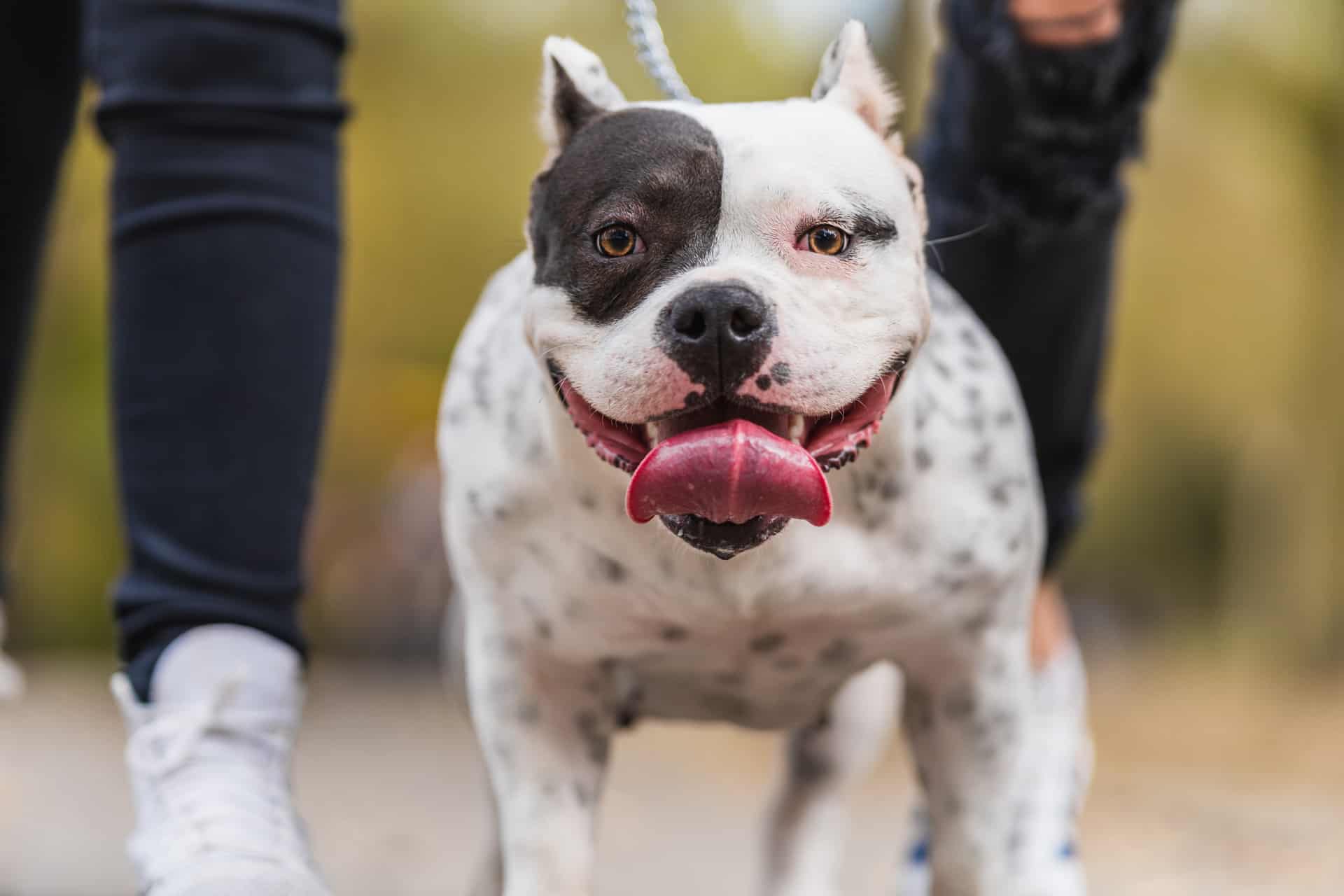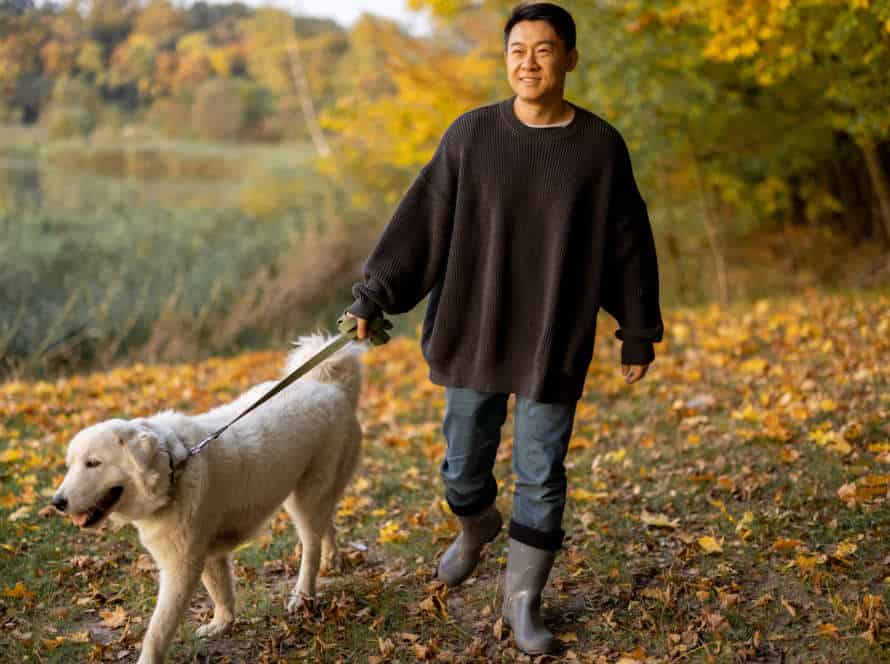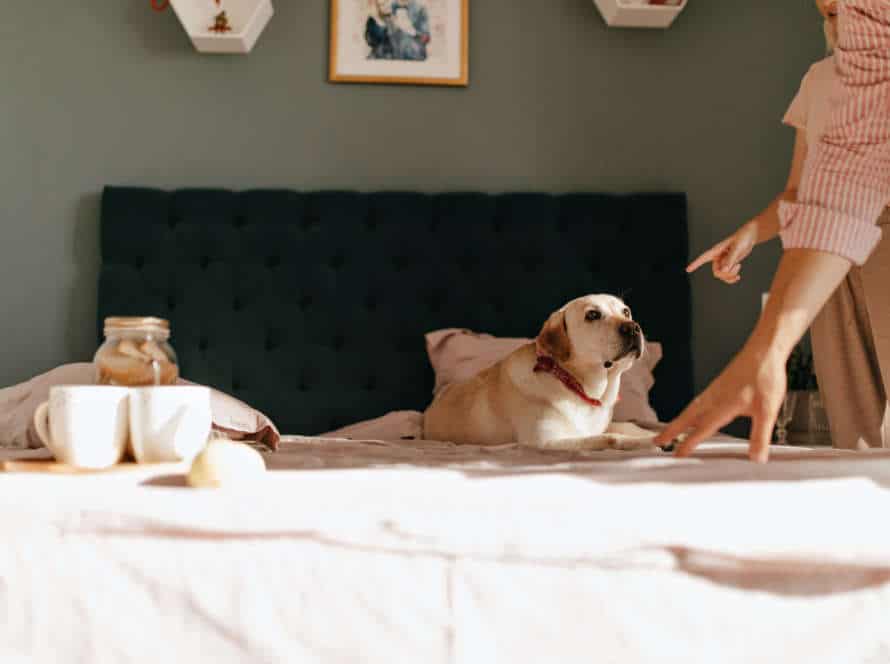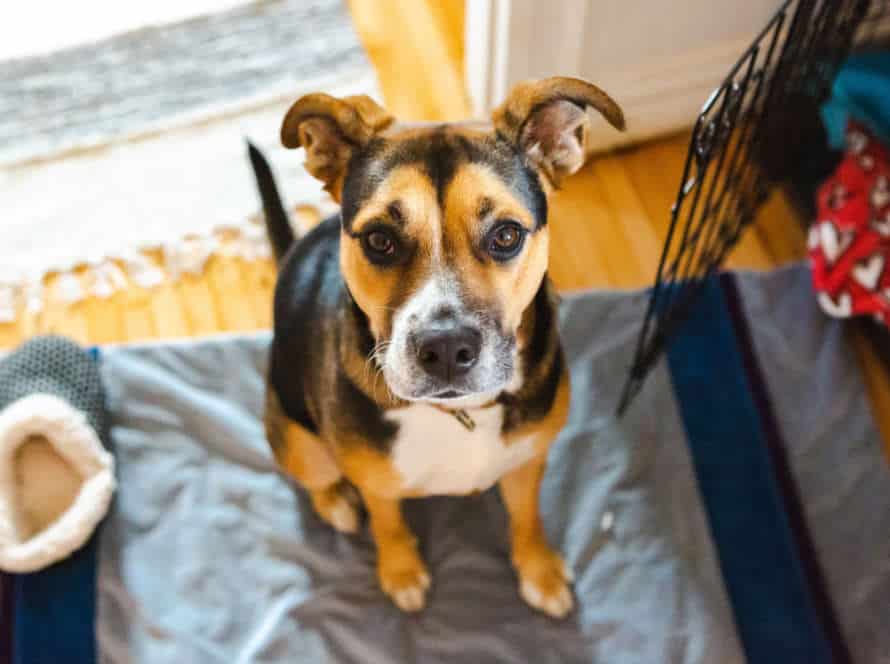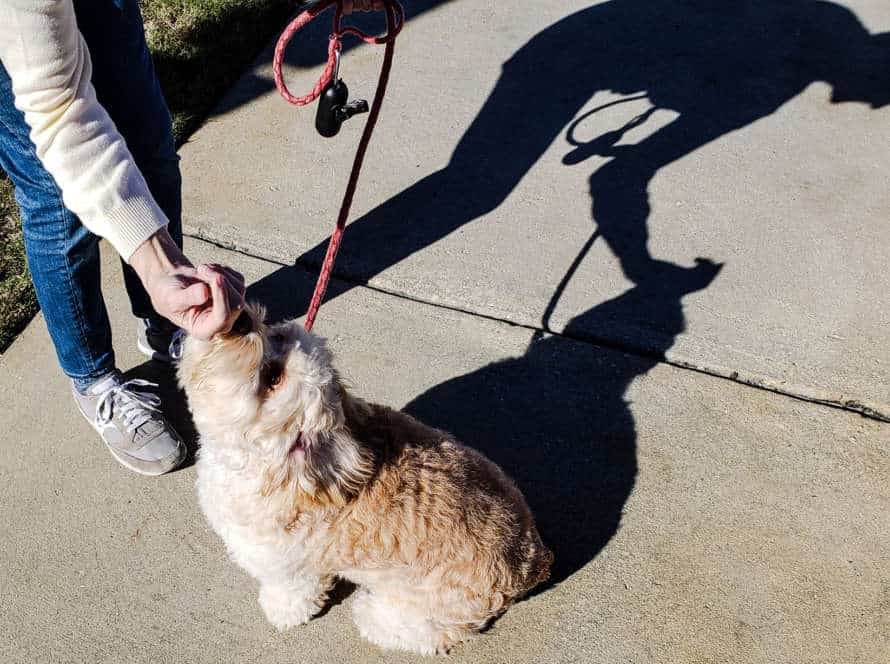Finding Support for Managing Your Leash Reactive Dog
Managing a leash-reactive pup can be tricky for pet parents. But, don’t worry! There are lots of support systems out there to help you tackle your pup’s anxiety, fear or aggression.
Here’s what you can do:
- Professional dog trainers can give private lessons, group classes or online consultations to teach your furry friend how to control their emotions and behavior.
- Veterinary behaviorists can diagnose any medical issues, accurately assess your pup’s behavior and create medication plans or suggest behavioral modifications.
- Online forums and support groups can connect you with other pet parents who have leash-reactive dogs. They can give advice, share experiences and provide emotional support.
- Dog walking services can provide a trained professional to safely exercise and socialize your pup while you take a break.
Remember, leash-reactivity is manageable. It just needs patience, effort and commitment. Getting support is the first move in helping your pet lead a happy and healthy life.
Understanding Leash Reactivity in Dogs
Leash reactivity in dogs is tricky to manage. To keep your pet and others safe, it’s important to understand the causes and how to handle it. This section looks at the reasons for leash reactivity and how to manage it. Remember, finding support is key – it’s a complex issue!
What is Leash Reactivity?
Leash reactivity is when a pup gets overly aggressive or excited on a leash. Signs of this can be barking, lunging, growling, and pulling. It can be caused by fear, anxiety, or lack of socializing. It’s important to know your dog’s behavior and get assistance to manage it so everyone stays safe.
Here are tips to help:
- Avoid confrontations on walks by staying away from people and other doggies.
- Use goodies and compliments to reward good behavior.
- Work with a pro trainer to make a custom plan.
- Use tools like harnesses to control pulling.
- Exercise and mental activities can reduce reactivity.
Common Causes of Leash Reactivity
Leash reactivity is a common doggy behavior problem. Reasons for it vary. Here are some of them:
- Lack of socialization. Dogs without proper social skills may be anxious, nervous, or aggressive around other dogs. This can lead to leash reactivity.
- Fear and anxiety. Some dogs may be scared of new people or dogs. The leash may make them feel trapped and more reactive.
- Negative past experiences. Dogs that have been abused, neglected, or traumatized may react to their leash due to bad memories.
- Frustration. When a leash stops them from getting to something they want, dogs may become frustrated and reactive.
- Medical problems. Pain, sickness, or injury can make a pup more reactive when tied to a leash.
To reduce leash reactivity, effective management and training techniques can help. A certified dog trainer or vet behaviourist can also be useful for managing and changing leash reactive behaviour.
Identifying Signs of Leash Reactivity in Your Dog
Leash reactivity in dogs is a common issue that can be tough to tackle. To understand the behavior, spot these signs of leash reactivity:
- Barking, lunging, or growling at other dogs or people while on a leash.
- Pulling or jumping too much when leashed.
- Panting or shaking when feeling trapped or confined.
If you notice any of these signs, get help from a professional dog trainer or behaviorist. With their support and guidance, it’s possible to improve your pup’s behavior and strengthen your bond.
Seeking Professional Help for Leash Reactive Dogs
Feeling overwhelmed and frustrated with a leash reactive dog? Don’t worry! There are pros who can help. They can show you how to control your pup and make going out together enjoyable. Here’s some resources to get the support you need.
Choosing a Qualified Dog Trainer
Leash reactivity in dogs can be stressful & anxiety-inducing. Finding a pro dog trainer is the best way to manage this behavior. Tips to pick the ideal one:
- Check for certifications like Animal Behavior College or a CCPDT certification.
- Choose a trainer who uses positive reinforcement.
- Ask for references & testimonials from past customers.
- Select a trainer with knowledge of leash reactive dogs.
- Look at cost & location of training sessions.
Researching & picking the right trainer makes a big difference for managing leash reactivity.
Deciding between Group and Private Training Sessions
When looking for help with a leash-reactive pup, consider the pros and cons of both private and group training.
Private training offers one-on-one attention and a plan customized to address your dog’s issues. This makes it perfect for severe leash aggression.
On the other hand, group training is more budget-friendly and can provide socialization and distraction training in the presence of others. Think about your pup’s temperament, needs and budget before deciding. Some trainers offer a combination of both for optimal learning.
Finding a Certified Veterinary Behaviorist
Leash reactivity can be a difficult behavior to manage in dogs. But, finding a certified veterinary behaviorist can give you & your furry friend support and guidance. Here are some tips to find one:
- Ask your vet or other dog owners for recommendations.
- Look on the American College of Veterinary Behaviorists website for certified behaviorists near you.
- Find one who uses positive reinforcement methods and has experience with leash reactivity.
- Have your dog’s medical history and behavior background ready for your consultation.
- With the help of a certified veterinary behaviorist, you can work to manage leash reactivity & improve your dog’s behavior & health.
Utilizing Online Resources for Support
Managing leash reactivity in dogs is a challenge. You need to train your dog well to end this behavior. Fortunately, you can find help online! Discussion boards, training videos, and comprehensive how-to’s are all available. In this section, we will show you how to access these resources and how to use them.
Create a good training and behavior plan for your dog!
Joining Online Communities and Forums
Discovering online dog communities and forums is a great way to get help with your leash reactive pooch. They usually contain experienced pet owners, trainers, and behaviorists who can give you useful tips and aid. Here’s some advice on how to find and join them:
- Use search engines to locate communities or forums focusing on canine behavior and training.
- Search for groups with many, active members who post and comment from experience.
- Make a profile and introduce yourself, plus your pup’s breed, age, and reactivity issues.
- Take part in discussions and ask for advice or share your own experiences. Keep in mind, the knowledge and backing from these groups can help you comprehend and control your pup’s leash reactivity problems.
Using Social Media to Connect with Other Dog Owners
Social media has become an absolute must-have for dog owners. Connecting with others, sharing experiences, finding tips for managing leashed-reactive dogs – it’s all possible! Here’s how to use social media to connect with other pup-parents:
- Join a Facebook group for owners in your area, breed, or facing a similar issue.
- Follow people with leash-reactive dogs on Insta and Twitter.
- Join online forums for dog owners.
Remember to read the rules and guidelines of any group you join. Get involved, post, and ask for advice. Although social media can’t replace professional help, it’s a great resource to share advice and experiences with fellow dog owners.
Reading Articles and Watching Videos on Leash Reactivity
If you have a leash-reactive pup, you’re not alone! There are plenty of online resources. Articles and videos can help you understand the issue. Here are some tips to use them:
- Look for certified trainers or behaviorists who specialize in leash-reactive dogs.
- Read and watch things that address your concerns, like lunging or barking.
- Check out any techniques, tools, or equipment suggested. Research to make sure they’re safe and right for your pup.
- Join online forums and groups to connect with other owners, share experiences, and get support from experts.
With the right help, you can manage and improve your dog’s leash reactivity. Then, walks will be more fun for both of you!
Connecting with Local Support Groups
Searching for help with your leash reactive pooch? Experienced pros and other dog owners can help. Local support groups provide an awesome chance to meet others with similar interests. This post looks at the types of local support groups available, and how to get in touch with them.
Researching Local Dog Walking Groups and Clubs
Researching local dog walking groups and clubs is a great way to meet other dog owners who understand leash-reactive dogs. Here’s how to start:
- Look for dog training schools, pet stores and animal shelters in your area.
- Use social media such as Facebook, Instagram, or Twitter to look for online dog groups.
- Come to local dog shows and events. Here you can network with other pet owners and trainers and learn about upcoming dog walks and training sessions.
Being part of a local group or club will help you create bonds with other dog owners and get the support you need to manage your reactive pup. Pro Tip: Always make sure your pup is vaccinated and well-behaved during group walks.
Finding Breed-Specific Groups in Your Area
Managing your leash reactive dog can be a lot easier with breed-specific groups in your area. They provide a supportive community full of other dog owners like you. Here’s how to find one:
- Search online for breed-specific groups in your area. Facebook is great for this.
- Reach out to local trainers and ask if they know any.
- Check out local dog classes and workshops.
- Ask your animal shelter or rescue organization. They may know of a group or other dog owners who have leash reactive dogs.
Joining Meetup Groups for Socialization and Support
Joining a Meetup group is a great way to get connected with local support groups and find help managing your leash-reactive dog. Here’s how to discover the correct Meetup group for your needs:
- Check for Meetup groups that focus on dog owners with reactive dogs. Such groups will have members who understand the difficulties of living with a reactive dog.
- Before becoming an official member, attend one or two events. This will give you a feel for the group’s culture, values and atmosphere.
- Be open and honest about your situation. Tell the group about your difficulties and successes and ask for advice and support when you need it.
- Remember, Meetup groups should be enjoyable and social as well as supportive. So, take part in activities that appeal to you and make connections with other members, not just talking about your dog’s reactivity.
Pro tip: Meetup groups can give you lots of info and support. But, don’t use them instead of professional advice or intervention for serious behavior issues. Always consult with a qualified dog trainer or behaviorist for help with your reactive dog.
Creating a Personalized Management Plan for Your Dog
Creating a personalised management plan is essential for aiding your leash reactive pup. Search for a plan that fits you and your pup. This will help manage the leash reactivity. Seeking support from experts and other resources is paramount to coming up with an effective plan.
Let’s investigate the different ways of finding support to manage your leash reactive pup.
Implementing Positive Reinforcement Training Techniques
Positive reinforcement training is an awesome way to teach your pup! It involves rewarding them for good behavior and ignoring the bad stuff. Here are some tips:
- Identify behaviors you want to encourage, then use treats, praise or affection as rewards.
- Be consistent and patient.
- Don’t punish or negatively reinforce – it’s not effective and can hurt your dog.
- Get help from professionals if needed. They can help you understand the cause of your pup’s behavior and create a unique plan.
Remember – positive reinforcement takes time and effort, but it pays off with a happy pooch!
Controlling Your Dog’s Environment to Minimize Triggers
If your pup is nervous or reactive, controlling their surroundings is important to lower triggers that might bring on tension or aggression. Making a personalized plan for your dog and getting assistance for taking care of your leash-reactive dog may help too.
Here are a few pointers to get started:
- Find out your dog’s triggers: Jot down what scenarios or people make your pup act negatively, and manage or dodge them as necessary.
- Develop a reliable routine: Dogs do well with routine, so making a fixed agenda for meals, exercise, and play can help reduce stress and uneasiness.
- Use positive reinforcement training: Train your pup to respond positively to orders and stimuli and help build their self-assurance and decrease their reactivity.
- Get help: Attending a local support group or working with a professional dog trainer can give you important advice and aid in handling your pup’s conduct.
With patience, steadiness, and proper aid, you can make a safe and peaceful atmosphere for your anxious or reactive dog.
Pro Tip: Be patient and consistent with your pup’s training and seek help if needed for successful management of your pet.
Using Management Tools, Such as Muzzles and Calming Aids
Managing a leash reactive pup can be tough. Utilize tools like muzzles and calming aids to help. Get personalized advice by consulting with an expert in dog training or behavior. Introduce these tools gradually and use treats/positive reinforcement. Identify what triggers your dog’s reactive behavior and avoid it. Practice positive reinforcement training to help improve the behavior and bond with your dog. It is possible to help the pup overcome their reactive behavior and have a happy, healthy life – but remember it can be challenging!
Conclusion and Next Steps
Researching support for leash reactive dogs reveals many possibilities. Options include:
- Local classes
- Professional help
- Online resources
- Support groups
Let’s recap these options and offer tips for getting started. Boom! Done and dusted.
Recap of Finding Support for Managing Leash Reactivity
To sum up, managing leash reactivity in dogs can be tough without the correct support and guidance. It is key to know that leash reactivity is a normal problem that can be solved with the correct strategy and patience. We talked about different ways to get help for your leash reactive pup. These include getting in touch with certified dog trainers, joining help groups, and using positive reinforcement training methods. Furthermore, being consistent, patient, and determined is vital to assist your dog in overcoming their reactivity issues. With the proper support and guidance, you can help your furry companion become more self-assured, serene, and well-behaved.
Pro-tip: Recall that each pooch is one of a kind and needs a bespoke approach to tackling their leash reactivity issues. So, be tolerant and firm, and don’t be scared to ask for expert help if required.
Additional Resources and Where to Find Them
It’s important to have a plan if you’re a dog owner dealing with leash-reactive behavior. These resources can help:
- CPDTs (Certified Professional Dog Trainers): Search the Certification Council for Professional Dog Trainers (CCPDT) website for CPDTs in your area.
- Reactive Rover Programs: Look into reactive rover programs at your local animal behavior clinics and dog training centers.
- Online Support Groups: Join a social media group or Reddit community for dog owners. You can share stories and seek advice.
Patience, consistency, and the right resources are key. Don’t forget to ask for support – you and your pup deserve it.
Next Steps for Helping Your Leash Reactive Dog
Helping a leash reactive pup is a long-term process that needs patience, consistency, and help. Here are the next steps to take for you and your dog to successfully manage this behaviour:
- Find an encourager of good behaviour-based pup instructor or behaviour expert who specialises in leash reactivity. They can work with you to create a training plan for your pooch’s specific requirements.
- Get support from local groups for pet owners dealing with leash reactivity or online communities. Talking to others in a similar situation can give you helpful insight and emotional aid.
- Think about using calming elements such as Thundershirts or calming pheromone sprays to help your pup relax on walks.
- Don’t get dejected if progress is slow. Every pup is unique and will advance at its own tempo. With patience, consistency, and support, helping a leash reactive pup can be a successful journey.
Pro tip: Do not forget to look after yourself too. Dealing with a leash reactive pup can be nerve-racking, so make sure your own mental wellbeing is cared for.
Frequently Asked Questions
Q: What is leash reactivity in dogs?
A: Leash reactivity is a behavior where a dog becomes aggressive or fearful towards other dogs or people while on a leash. This behavior may lead to pulling, growling, or barking to ward off perceived threats.
Q: How can I manage my leash reactive dog?
A: The best way to manage leash reactivity is by seeking professional help from a veterinary behaviorist or a certified dog trainer. They can offer personalized training programs that can help your dog overcome their reactive tendencies.
Q: What are some effective techniques to manage leash reactivity?
A: Some effective techniques to manage leash reactivity include counter-conditioning, positive reinforcement training, and desensitization. These techniques will help your dog to associate positive experiences with other dogs and people while on a leash.
Q: Can a leash reactive dog be trained to socialize with other dogs?
A: Yes, a leash reactive dog can be trained to socialize with other dogs under the guidance of a professional. With patience and consistent training, your dog can learn to interact with other dogs more positively.
Q: What types of equipment can I use to manage my leash reactive dog?
A: You can use equipment such as a front-clip harness, head halter or a basket muzzle to manage your leash reactive dog. However, it is recommended to seek professional advice before using any equipment.
Q: Where can I find support for managing my leash reactive dog?
A: You can find support by reaching out to your veterinarian, dog trainers, or animal behaviors. You can also join online forums and communities for dog owners with leash reactive dogs.

